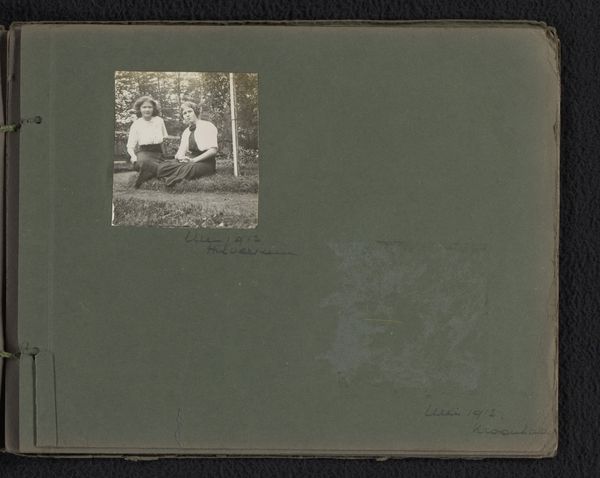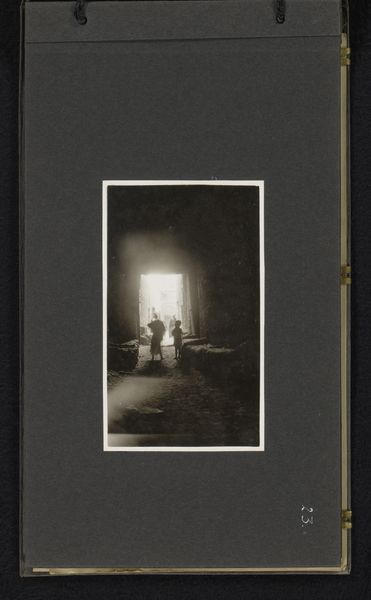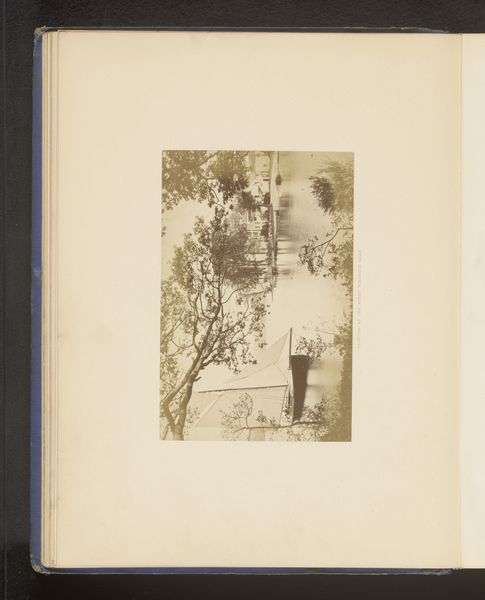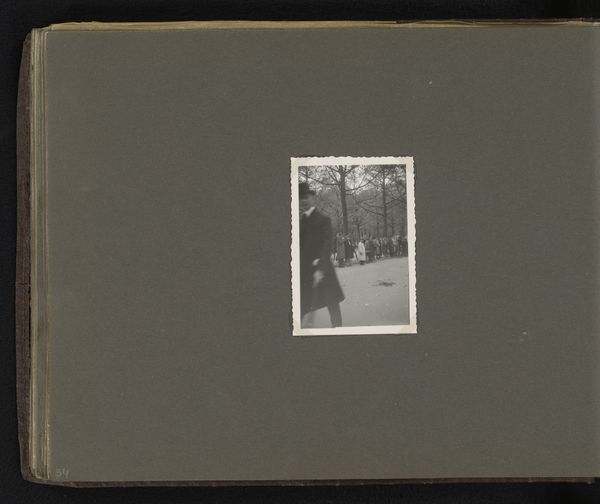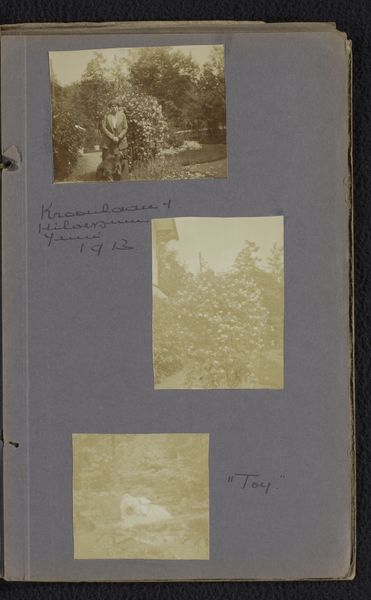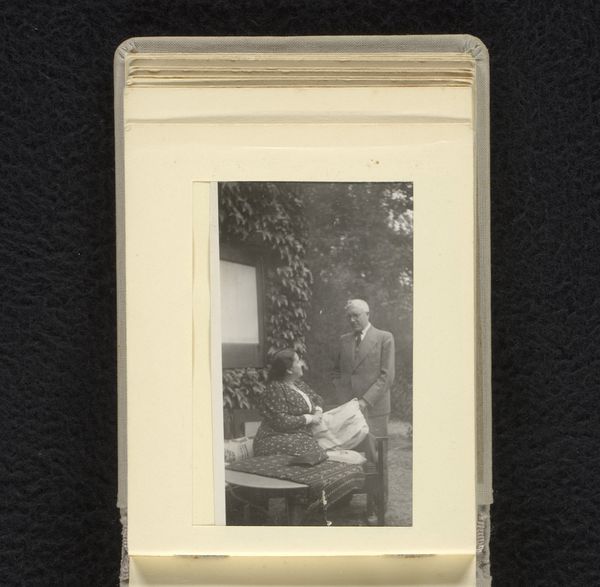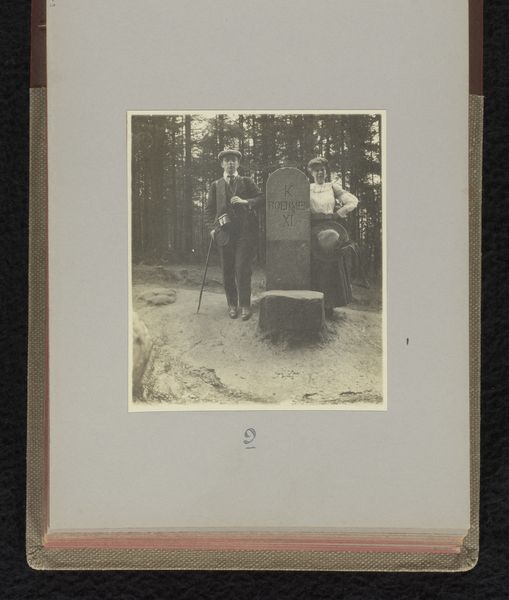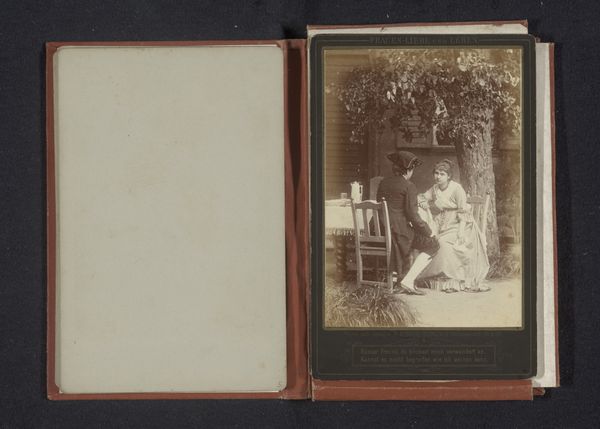
plein-air, photography
#
plein-air
#
landscape
#
street-photography
#
photography
Dimensions: height 112 mm, width 68 mm, height 125 mm, width 210 mm
Copyright: Rijks Museum: Open Domain
Curator: This photograph, possibly taken in 1927, is titled "Two European Men Sitting in the Bois Sacré in Tlemcen," credited to A.G.A. van Eelde. Editor: Something about this image evokes a quiet stillness. The men are framed by a field and the skeletal forms of winter trees. The subdued tonality makes you think about simpler times, but underneath there might be complicated realities. Curator: Precisely. The photograph offers insight into the colonial gaze during that period. Consider the power dynamics at play: European men, leisurely positioned within a landscape marked as "sacred" in Tlemcen, Algeria. This highlights the appropriation of land and the imposition of European presence. Editor: That sacred place... it becomes a backdrop. And the men? They are so relaxed, almost staged. It’s a curious juxtaposition of what's present versus absent from the photo's surface. It feels almost casual but carries the burden of history with it, even in its delicate monochrome rendering. What stories could that place tell if the landscape could talk? Curator: The artist’s use of plein-air technique is particularly interesting. While intending to capture the scene naturally, it also serves as a documentary style reinforcing the reality they perceive—one where their presence feels natural, almost entitled. It's important to dissect the casualness. Who gets to be "casual" here, and at whose expense? Editor: It definitely begs a ton of questions about the context. And the absence of contextual explanation almost seems like it demands some more historical framework to counter it. If it doesn’t come attached, does the artwork run the risk of reinforcing its central theme accidentally? Curator: Indeed, by critically analyzing this piece, we confront the legacies of colonialism embedded in seemingly innocuous scenes. It prompts us to consider how such visual narratives contribute to the historical record and how we interpret them today. Editor: I see this image now with fresh eyes—not as a quaint landscape photo, but as a challenge, an invitation, maybe even a bit of a dare to reconsider everything hiding under the surface of its seeming quiet.
Comments
No comments
Be the first to comment and join the conversation on the ultimate creative platform.
